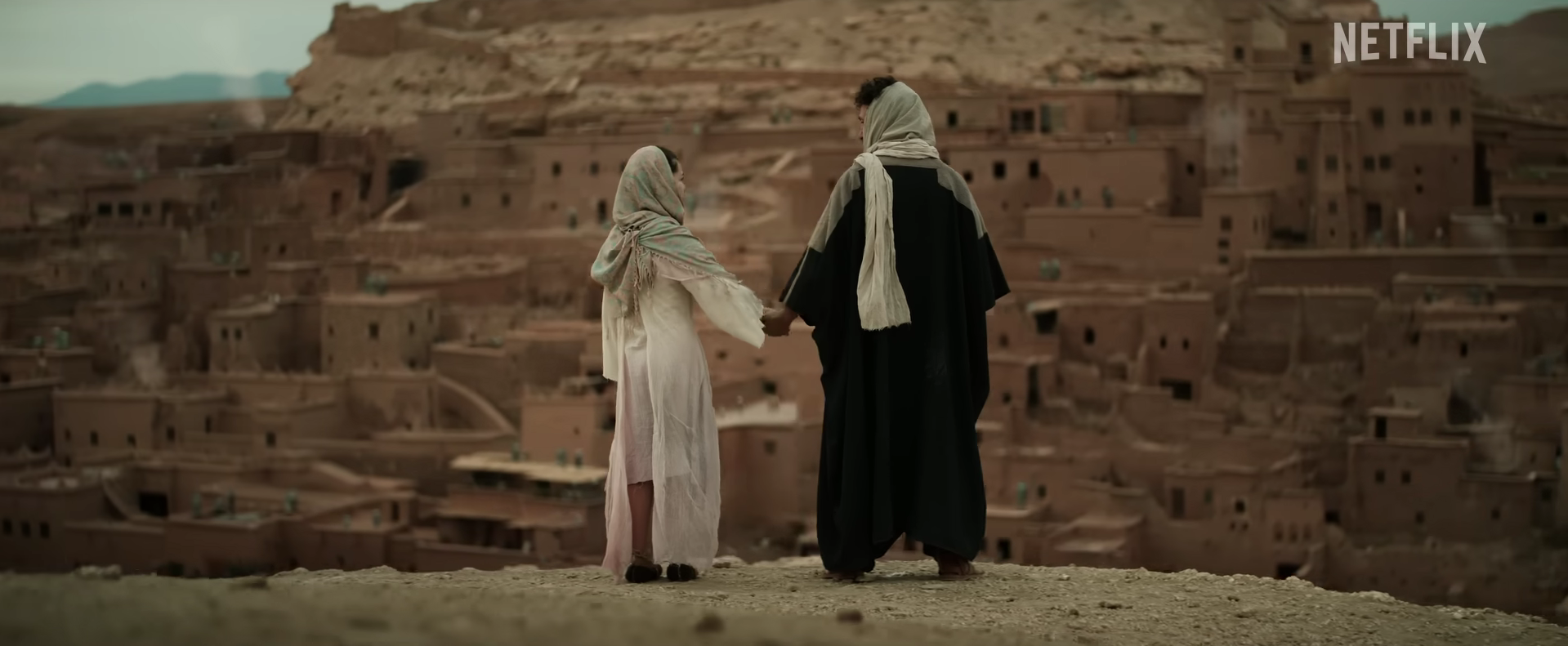THE STAR of Bethlehem soars brightly in the night sky; a newborn child lays in a manger, surrounded by His mother and father.
This imagery is no stranger to the holiday season. After all, the birth of Jesus Christ is the reason behind the Christmas celebration. But behind this nativity scene is the story of a woman: Mary, the mother of Christ.
Released on Dec. 6, Mary is a Netflix original film that reimagines the Blessed Mother’s life. A coming-of-age drama based loosely on Biblical accounts and pious tradition, director D.J. Caruso chose to build the film around Mary’s experiences before she played a key role in salvation history rather than retell the classic story many have come to hear.
The majority of the film is drawn from The Protoevangelium of James, an apocryphal and pseudepigraphal second-century gospel. Apocrypha refers to texts that were not included in the Bible, while pseudepigrapha are works wrongly attributed to a Biblical figure.
The Protoevangelium of James explores Mary’s journey and experiences before being chosen as the mother of Christ. It offered rich material that helped Caruso execute his imaginative vision for the film.

Caruso deliberately chose to draw his vision from the apocryphal text because the Holy Bible did not provide much details about Mary’s life. The dearth of sources detailing the upbringing of the Virgin Mary led Caruso to tweak and inflate some details of both the scriptures and the apocryphal text to serve the film’s flow.
For instance, the film chose to adjust Mary’s (Noa Cohen) age when her parents Anne (Hilla Vidor) and Joachim (Ori Pfeffer) presented her to the Temple of Jerusalem. The Protoevangelium of James states that Mary was three years old when she was first brought to the temple. In contrast, the film portrayed her as a pre-teen during her arrival at the temple.
Caruso also emphasized King Herod’s (Anthony Hopkins) role in the film by highlighting his tyranny and brutality during his reign in Judea. Rather than letting King Herod stay within the film’s backdrop, Mary introduces him through a reinterpreted and fleshed-out portrayal of who he was during his time.
Numerous scholars have diagnosed King Herod with a variety of physical and mental illnesses based on historical accounts. The film chose to amplify this detail to help build a foundation for his irrationality and rash decision making.

The intense portrayal of the political climate during Mary’s time sought to help viewers gain a better understanding of the harsh conditions during the conception of Christ.
While some parts of the film were based on details found in pre-existing texts, the film mostly thrived on creating fictitious accounts of Mary’s life to connect scenarios in the scriptures and the Protoevangelium of James.
Before reaching the film’s second act, Mary witnesses the blinding of Baba Ben Buta at the temple. No biblical texts explicitly narrate how Baba Ben Buta was blinded, nor are there any texts stating that Mary was a witness to the event. The film employed its creative liberties by showing that a crown of thorns was used to blind Baba Ben Buta to foreshadow her Son Jesus’ fate of being crowned with thorns before His crucifixion.
One of the controversial directions the film took was the romantic portrayal of Mary and Joseph’s (Ido Tako) relationship.
The film shows Joseph encountering Mary by the river with the help of angel Gabriel (Dudley O’Shaughnessy). Stunned and enchanted by Mary, this encounter pushes him to passionately ask for Joachim and Anne’s blessing to marry their daughter.
Mary appears to doubt her decision to be wed to Joseph during their betrothal. On the contrary, Joseph’s character was quite comical and added a layer of humor to the suddenness of their relationship. Despite trying to create a wholesome moment between the two, it was unnecessary for the film’s overall mood.
Joseph’s discovery of Mary’s conception added elements that did not exist in both the scriptures and the apocryphal text. The film showed Mary being scrutinized and shamed for her pregnancy. In contrast, the Bible states that Joseph quietly separated from Mary to avoid such a scenario from happening. The detail reflected Joseph’s genuine love and concern for Mary, but it was disregarded by the film for the sake of a scene showing Mary being chased by a mob of religious fanatics and Joseph playing a hero to a damsel in distress.

The cinematography of Mary helped Caruso bring his vision of the narrative to fruition. In the first few minutes of Mary, the film enchants viewers with a wide shot of the desert, showing Joachim as a speck among its vastness and establishing the long journey he’s been through and the rest that awaits.
The dark and narrow shots within the temple also helped recreate the feeling of solitude that Mary went through during her years of dedicated service in Jerusalem.
While the film succeeded in painting the setting through stunning shots and landscapes, some of its elements felt compromised.
Some of the dialogue came across as too casual and present-day, which can ruin the immersive view of the era before Christ. This is best illustrated during the quick exchange between Anne and Mary after the Blessed Mother’s betrothal, in which they discussed Joseph’s physical appearance as if it was an important factor in their relationship. Although it is understood that Mary is not a canonical movie in any way, the decision to include the exchange undermines the divinity of Mary and Joseph’s relationship in addition to their bond being reduced to a romantic partnership.
The same can also be said about the styling of their costumes since stylistic choices seemed to amplify the actors’ visuals rather than the period they are playing in. Because of this, some cast members felt out of place or too ahead of their time in the film.
Noa Cohen’s soft and gentle approach to her role perfectly encapsulated the human aspect of Mary, illustrating her as a reserved and faithful woman even in the face of adversity. Ido Tako also delivered what was needed, but the film would have benefited from creating a persona of Joseph that was closer to Biblical texts. Making him too much of a dedicated and loving husband added a different but nuanced understanding of Mary and Joseph’s relationship. The film also portrayed him as a typical leading man who is ready to trade blows with those who insult him or his loved ones, a far cry from the Biblical Joseph who did not even say a word, but whose humility and dedication to God’s will made him a model of the faith.
Anthony Hopkins’ portrayal of King Herod was also a notable element of the film. He carried the perfect balance of terror, fear and desire. His dominance translated well across the screen and he easily marked the importance of his role through his performance.
In general, the film did well in its character portrayals except that of angel Gabriel, the messenger of God who informed Mary about the role she will play in the divine plan.

The blue robed and tattooed angel’s presence was unsettling, even frightening at times, an example of how creative liberty can go too far. In one scene, he even called the devil Lucifer “brother,” something that will raise eyebrows even among the not-so-devout Christians.
Overall, Mary was never meant to depict its plot as true or canon. By highlighting key episodes of Mary’s life and showing her going through experiences that the common woman goes through, the film helped viewers empathize with Mary or even understand the challenge of her divine role on a deeper level. Though it had a promising narrative, one must keep in mind that it is not a biblically accurate depiction of the Virgin Mary’s chronicles.
The film allowed viewers to wonder how many Biblical stories exist beyond the canonical scriptures and whether someone else will be brave enough to bring these stories to light, as Mary did. F



